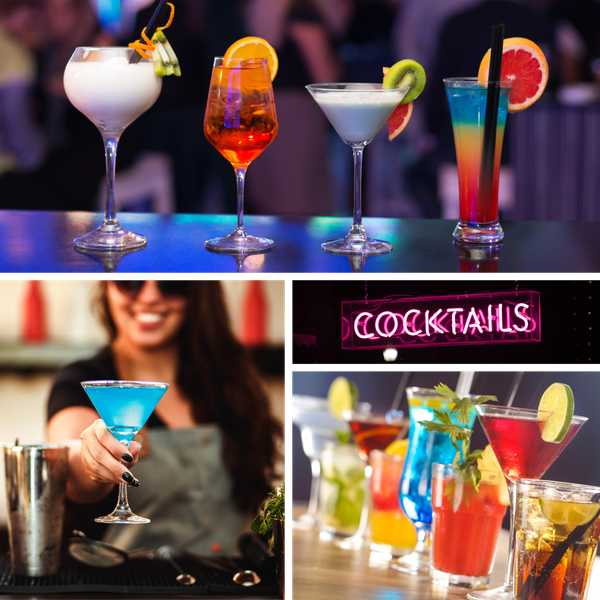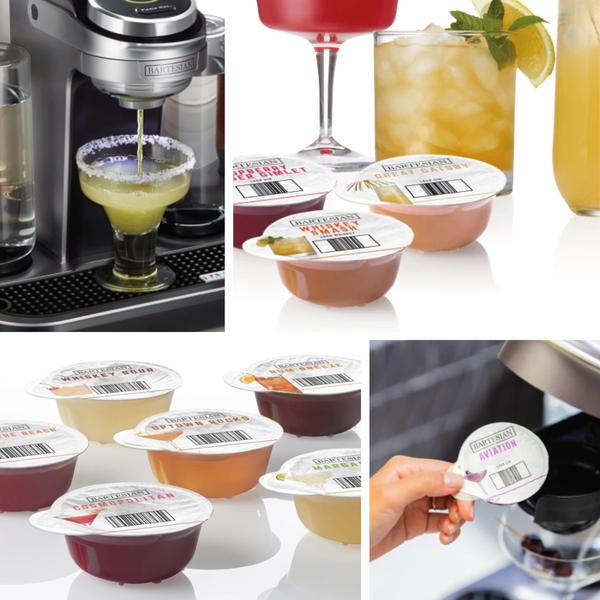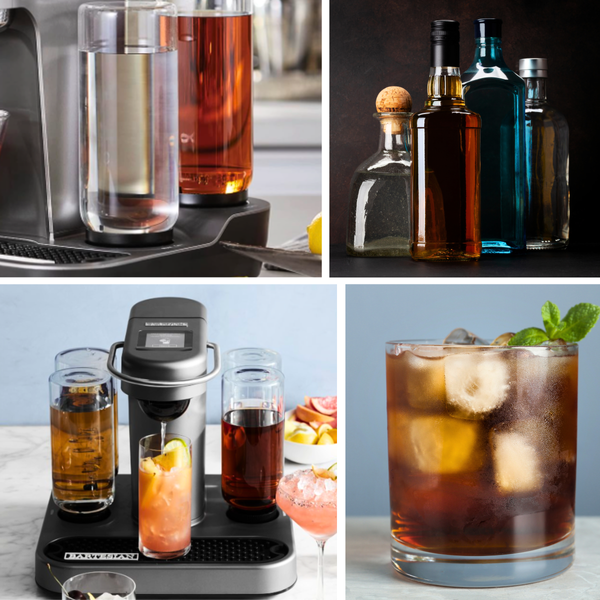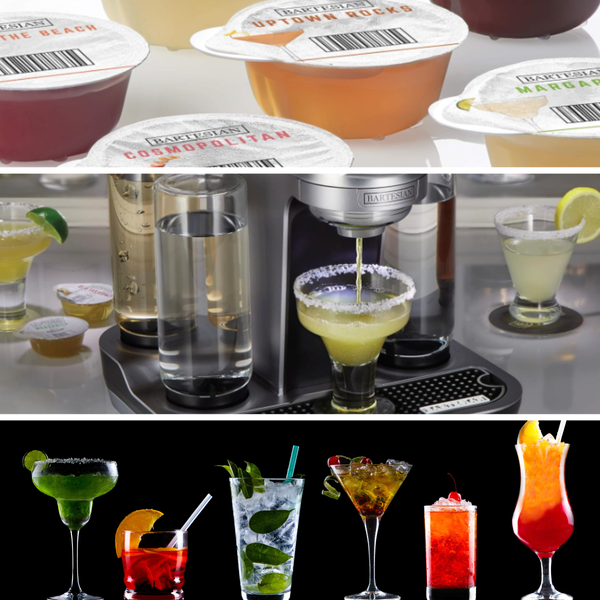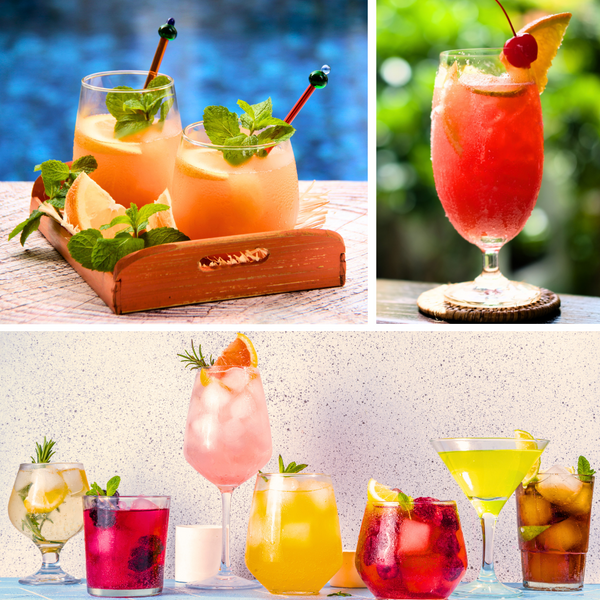Creating a delicious cocktail is akin to conducting a symphony, where the melody of flavors is orchestrated by the maestro - the mixologist. The magic unfolds not just through the harmonious blend of spirits and mixers, but also via the meticulous utilization of specific tools. In this guide, we'll delve into the world of essential cocktail tools, signify their importance, and offer instructions on their effective usage.
The Quintessential Cocktail Tools
Shakers
In the pantheon of cocktail-making, some tools are indispensable. Among these essential bar tools are cocktail shakers, which come in two primary forms: the cobbler shaker and the Boston shaker.
The cobbler variant, comprising a tumbler, built-in strainer, and cap, is user-friendly, making it an ideal choice for novices. However, its limited capacity and intricate cleaning process may deter some. Most home bar tool kits contain the cobbler shaker.
The Boston shaker, consisting of two tumblers (one-pint glass half, and one metal cup of equal size), is favored by professional bartenders for its larger capacity and versatility. Though it requires a separate strainer and a bit more dexterity to master, its benefits outweigh the initial learning curve. Most bars and commercial settings use Boston shakers.

Jiggers
Another vital tool! The purpose of a jigger is to measure and pour alcohol, and sometimes syrups and other mixes, creating consistency when making cocktails that require precision and finesse. Although some bartenders are moving towards free pouring, many still find the jigger to be a valuable tool.
A typical jigger is made up of two cones, with the taller cone holding 1.5 ounces (44 ml), and the shorter cone holding 1 ounce (30 ml). In most cases, the smaller vessel will have a size that is half of the taller one, making it easier to take measurements in relation to each other. To use a jigger properly, fill it to the top with your chosen ingredient and then add it to your shaker or mixing glass. Typically holding the jigger between the index and middle finger, tilt the jigger towards the shaker or glass and pour.
There are 3 main types, Japanese jigger, bell jigger, and hourglass (which is the least desired). We will cover the Japanese and Bell jiggers here today.
A Japanese jigger is a more professional option that is tall and narrow compared to an hourglass jigger. It has less risk of overpouring or overflowing while using. The elongated design of the Japanese jigger prevents the bartender from accidentally spilling the alcohol. Some jiggers even have marked measurements and a lip to prevent over-pouring.
The bell jigger, resembling a bell in shape, is similar to the hourglass jigger but is shorter and rounder. The benefit of using a bell jigger is that it has a lip around the rim of the bowl, providing more control to prevent spillage or overpouring.
Both the Japanese and bell jiggers typically have more heft than a simple hourglass model, making it easier to control in the hand of the bartender, saving on wasted spilled spirits.
Strainers
A third essential tool is the strainer, used to segregate liquid from solid ingredients post-shaking or stirring cocktails. There are three main strainer varieties, each with its benefits and drawbacks. Most bartenders and mixologists have a preference or loyalty to a particular type. Bartenders and master mixologists everywhere understand how crucial it is to find the right strainer tool that meets their specific needs.
The Hawthorne strainer, which fits onto a shaker or mixing glass and employs a spring to catch unwanted solids, is the most commonplace. These stainless steel wire strainers are designed for fast and efficient straining of cocktails, martinis, or shots by removing ice and fruit from the liquid. To utilize a Hawthorne strainer, simply secure it atop your shaker post-mixing, hold it firmly in place, and decant the shaken drinks into glasses.
A Julep strainer is primarily used to make Mint Juleps, but have other uses as well. This bartending tool is a perforated strainer that has a round, bowl-shaped design and is meant to fit perfectly over a mixing glass.
Bartenders prefer to have both a Hawthorne Strainer and a Julep Cocktail Strainer in their bartending tool kit. While the Hawthorne Strainer is great for use with a cocktail shaker, the Julep Strainer is better suited for straining from a cocktail glass. A fine mesh strainer can be a great addition to this list, especially if you use a cobbler shaker which typically has larger holes in its strainer lid.

Unique Bar Tools: An Exploration
Beyond the fundamental tools, there exist several unique implements that can elevate your mixology prowess:
The Bar Spoon
A slender, elongated spoon, is utilized for stirring and layering cocktails. Its length facilitates reach to the bottom of tall glasses, while its twisted handle ensures smooth stirring. Some bar spoons have a weighted ball end (Japanese Bar Spoon) to help with balance in the hand as well as muddling capabilities (European Bar Spoon). Bar spoons mainly have a twisted handle for stirring. The twists on the spoon complement the stirring motion so that it’s continuous and smooth. This prevents splashes and, with the right stirring technique, will minimize diluting the drink.
The twist in the spoon design also makes it possible to pour drinks down the spiral handle without spilling. This is particularly useful when layering beverages, as you can pour liqueur or liquor down the handle without making a mess.
You can effortlessly add carbonated mixers such as sodas to your drink without spilling a drop! It's a simple technique to learn, but it looks very impressive.

Citrus Squeezers
Yet another distinctive tool. Fresh citrus juice can amplify the flavor profile of your cocktail, and a citrus squeezer guarantees maximum juice extraction sans seeds. make high-quality cocktails at home, using fresh citrus is essential. However, manually squeezing a large number of limes can become tedious, especially when preparing a batch of Mojitos or Texas Ranch Water cocktails. You can avoid hand cramps and make your life easier by equipping your bar with a reliable and user-friendly citrus juicer. With this tool, you will avoid having pulp and seeds in your cocktail shaker while getting the exact amount of freshly squeezed juice you need.
Cocktail Smoker Kit
For smoked cocktail aficionados, a cocktail smoker kit is a must-have. This kit typically encompasses a smoker gun, wood chips, and a cloche or dome to trap the smoke. The smoker gun utilizes wood chips to produce smoke, which infuses the cocktail or glass with an enticing smoky flavor.
The Other Tools
To round out your supply list for your home bar or man cave mixology station, consider these bar equipment standards. Bottle opener, a large cubed ice-making tray (I use the silicone variety), a paring knife for garnishes, bar glasses, and assorted cocktail glasses such as rocks, martini glass, and shot glass varieties. Mixing glasses, bar towels, and even something always overlooked, like bar mats, prove to be invaluable bartending tools behind the bar.

A Good Mixologist Is Always Prepared
In conclusion, understanding your essential bar tools and how to use them effectively can significantly elevate your mixology game. Whether you're crafting a classic Martini or smoking an Old Fashioned, remember that the magic lies not only in the blend of the right ingredients but also in the adept use of the right tools. So, grab your cocktail toolkit, gather your ingredients, and let's embark on this flavorful journey together. Cheers!

Cocktail Smoker Wood Chips



